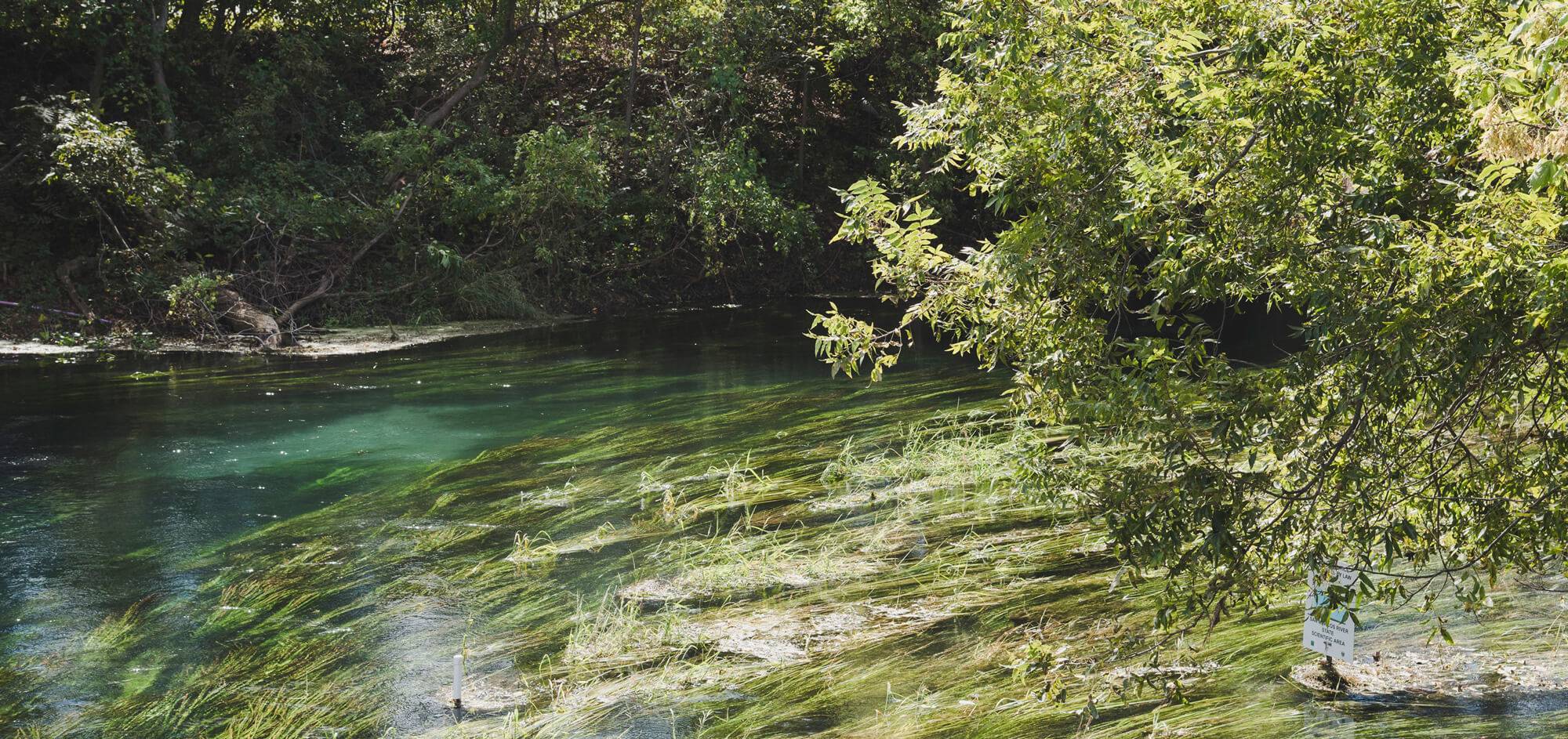Arnold Cabins
Humble Homesteads Yield Valuable Information

On August 12, 1870, a man named D. E. Arnold filed a patent for a small parcel (160 acres) of land on the southern bank of the Blanco River. We know very little about him beyond what can be deduced from the patent records of the time. We know that he was married, because his wife's name, Mary, is listed on a later deed. We also know that Arnold was illiterate: his name on the signature lines of official paperwork is written in the same handwriting as the clerk, accompanied by a small X -- his mark. He was, however, obviously intelligent and made good use of the federal and state homestead acts of the time to acquire several small plots of land in Hays, Blanco, and Burnet Counties.
A homestead consisting of two cabins was established on a rise overlooking the river on the Hays County parcel, close enough to provide water for the household and livestock, but at a sufficient elevation to be safe from the violent flash floods to which the area is prone. The Arnold family resided there for a relatively short time. D.E. and Mary Arnold sold the land in 1876. Not much is known about small homesteads like the Arnold family's, although they were very common. These kinds of humble dwellings are interesting to archaeologists for the potential insight they offer into the daily lives and concerns that faced many of settlers in Nineteenth Century Texas.

In June through August of 2015, archaeologists from CAS were invited by the current landowner, Peter Way, to perform excavations in the homestead area. A previous investigation conducted by the University of Texas had pinpointed the locations of the two structures, built from local wood with limestone chimneys. The CAS excavation focused upon these locations. Ten excavations units and a number of shovel tests were excavated.
This site is a multi-component site, which means that people stopped in this location more than once in the past, and stayed long enough to leave materials behind to be found by archaeologists.
Prehistoric Component (5,000 to 1,300 years ago)
The earliest occupations are represented by Middle to Late Archaic projectile points. Because several different styles of projectile points were recovered, it is likely that many different groups of Native American people may have passed through the area between 5,000 and 1,300 years ago.
Historic Component (1865 - 1880)
The latest occupation was the Historic Period Euro-American occupation represented by the structures and other historic artifacts. This occupation is dated to between 1865 and 1880, overall. Because the same kinds of house-hold artifacts were found near both structures, it is believed that both were dwellings, rather than one being a home and the other a workshop or other outbuilding. It may be that two households belonging to the same family lived on the land together. Click on the images in the gallery below for more information about specific artifacts and how they can be used to assign a specific date to a site.
-
Click to activate full screen -
Click to activate full screen -
Click to activate full screen -
Click to activate full screen -
Click to activate full screen -
Click to activate full screen -
Click to activate full screen -
Click to activate full screen -
Click to activate full screen -
Click to activate full screen -
Click to activate full screen -
Click to activate full screen
